#how to do ganesha puja
Explore tagged Tumblr posts
Text
Budhwar Upay: बुधवार के दिन करें भगवान गणेश के इन मंत्रों का जाप, खुल जाएंगे सौभाग्य के रास्तेBudhwar Upay बुधवार का दिन भगवान गणेश की पूजा के लिए समर्पित है। इस दिन की गई पूजा और व्रत से वह जल्दी प्रसन्न होते हैं और अपने भक्तों को आशीर्वाद देते हैं।
#Wednesday puja#wednesday upay#budhwar upay#how to impress lord ganesha#how to please lord ganesha#lord ganesha puja#ganesha puja#how to do ganesha puja#how to worship ganesha#Dharm News in Hindi#Dharm Hindi News
0 notes
Text
Religious Pluralism in Action
An Overview of Terms
Religious Exclusivism
"Religious exclusivism, or religious exclusivity, is the doctrine or belief that only one particular religion or belief system is true. This is in contrast to religious pluralism." (source: wikipedia)
Religious Pluralism (Politically)
"Religious pluralism is an attitude or policy regarding the diversity of religious belief systems co-existing in society." (source: wikipedia)
Religious Pluralism (Spiritually)
"Religious pluralism, as a spiritual practice, is when an individual practices two (or more) separate religious traditions without directly engaging in syncretism. " (source: The Temple of Hyacinthus)
Background
This morning I woke up knowing it was going to be a hard day. I could feel the exhaustion in my body and mind; and as I got out of bed to prepare for work, I was acutely aware of how slow and unmotivated I was feeling.
I entered my office and went to my standing altar. I lit my 'hearth candle' and said a quick prayer to the Household Gods before I got started on my day.
As the minutes ticked by I could tell my emotions were getting the better of me - weighing me down and consistently interrupting my focus. I was longing for a feeling of strength and a feeling of safety - and in that moment the Hindu Goddess Kali (🙏 Om Krīm Kālikāyai Namaḥ 🙏) and the Hindu Goddess Durga (🙏 Oṃ Śrī Durgāyai Namaḥ 🙏) came to my mind.
For Context: Before converting to Hellenic Polytheism, I was a follower of Sanatana Dharma (Hinduism) for several years.
So, I went over to my shrine to Shakti's incarnations at Maa Kali and Maa Durga and lit their candles. Invoking the blessings of the Goddesses, and the bringer of luck Ganesha, I prayed:
Please give me protection, please give me strength
Om Maa Durga
Om Maa Kali
Om Ganesha
Om Shakti
Reflection
Just because I am a Hellenic Polytheist and no longer identify as a student of Hinduism, does not mean I cannot call upon the Devas for guidance or support. It also doesn't mean that just because I primarily identify as a Hellenic Polytheist that I can't also worship Hindu deities when I feel called to do so.
The beauty of Hellenic Polytheism is that it is not a religion that preaches Religious Exclusivism (unlike Christianity and other monotheistic religions). I can be a Hellenic Polytheist, but can also practice Religious Pluralism and practice Sanatana Dharma. And the beauty of these religious traditions is that they both acknowledge Religious Pluralism and reject Religious Exclusivism.
So, I may be a Devotee to Lord Apollo and Lady Aphroditê - I may steward a Hellenic Temple - and I may reply 'Hellenic Pagan' if someone asks for what religion I follow. But I can still celebrate Diwali and Navratri, I can still hold Pujas for the Devas, and I can still incorporate Dharma into my life.
This is Religious Pluralism in action; giving yourself the permission, space, and grace to fulfill your spiritual needs through multiple religious traditions. It doesn't work for everyone, but it's the path that works for me.
Eirene - peace and farewell,
Aön
#Religious Exclusivism#Religious Absolutism#Religious Pluralism#Multifaith#Dual Faith#Hinduism#Sanatana Dharma#HelPol#Hellenic Polytheism#the temple of hyacinthus#textpost
14 notes
·
View notes
Text



"Ganesha is the Power that removes obstacles by the force of Knowledge...." ~Sri Aurobindo
Ganesha ॐ Talon Abraxas
Prayers of Invocation
Invocations are chants and prayers by which we “invoke” the presence of the Deity. The God is being called. The God and the devotee are being brought together, in touch. Prayers of invocation often sing out the greatness of the Deity, His known attributes and qualities. Vedic rishis and holy sages of olden times were masters of invocation. They could immediately call up the devata through the strength of their mantras. In the puja and japa chapters of this book there are many chants that also serve as powerful invocations. “Aum Shri Ganeshaya Namah” is an invocation in itself. We begin this section on prayers with a famous shloka to Lord Ganesha from the root scripture of all denominations of Sanatana Dharma, the Vedas. It has been chanted by billions of Hindus down through the ages, uttering five attributes of Ganesha and invoking His all-powerful protection.
Aum shuklambaradharam vishnum Shashivarnam chaturbhujam Prasanna vadanam dhyayet Sarva vighnopa shantaye Aum, attired in white and all-pervading, O moon-hued, four-shouldered One with smiling face so pleasing, upon You we meditate for removing all obstacles.
Shri Adi Sankara prayed in his Ganesha Bhujangam the following invocation. It is particularly suitable for recitation before japa and deep meditation on the highest wisdom of Lord Ganesha, the incomparable Lord:
To You whom the wise exclaim as the single-syllabled, Supreme sound, stainless and peerless, bliss, formless, unconditioned — the Indweller in the core of sacred tradition — to that Primeval One I bow in adoration.
Prayers of Supplication
Prayers of supplication are requests, pleadings or entreaties presented to the Deity in the spirit of personal surrender and loving devotion. Something specific is being asked for, a specific problem is being laid at the Lord’s Holy Feet. Such supplications to the one-tusked Lord are given unconditionally, with full trust that He will do what is best for us, though not necessarily what we might think is best. We do not demand of the Lord; for He, like a parent, provides not as we desire, but as we truly need. Prayers of supplication may come forth in the natural language of our hearts.
Leaving a problem at His holy feet means we let it be there and do not carry it home with us. Nor do we worry or wonder about how it will be handled, when it will be taken care of, or if it will be taken care of at all. In full unquenchable faith we leave the matter there, at the feet of the God, and walk away from the temple or shrine, feeling that release has started and solution will be forthcoming. We must have this kind of faith for religion to work within us. To carry home with us the same problems, fears and worries would be to take back the offering we have given the Deity to dissolve. This is like the rich and famous who buy with gifts and do not give at all, slyly expecting more than something in exchange, gaining papa rather than punya and not knowing the difference. The course of events will later show how he works for our ultimate spiritual welfare. The following are prayers we may use as circumstance dictates.
17 notes
·
View notes
Text
Pitra Dosh Shanti Puja in Nashik – Your Spiritual Reset at Trimbakeshwar
Pitra Dosh Puja in Trimbakeshwar, Nashik

Hindus use a ceremony known as Pitra Dosh Nivaran Puja to reduce the bad effects of Pitra Dosh. Pitra Dosh is thought to come from our ancestors’ unfulfilled wishes or unresolved problems. The main goal of this puja is to make peace with our ancestors and ask for their blessings.
The many rituals and ceremonies of the Pitra Dosh Nivaran Puja are led by a pandit, who is a kind of priest. During the puja, people actively recite sacred mantras to appease their ancestors. The ritual begins by calling on Lord Ganesha, who is known as the “remover of obstacles.” Devoted worshipers bring gifts such as flowers, incense, and holy water.
By doing this puja with full devotion, people hope to lower the effects of Pitra Dosh on their lives. People believe that getting the blessings of their ancestors through this puja will help them get through hard times, build stronger relationships, improve their financial security, and make them happier in general.
Do you want to do pitra dosh nivaran puja online that will help you handle life’s challenges with grace and success? Don’t go any further. This blog will show you how to balance your Pitra Dosha by using information from the pitra dosh remedies of Lal Kitab, which is an old book about pitra dosh in astrology.
Please meet Pandit Manoj Guruji. He is a kind teacher who has spent his whole life guiding curious travelers like you along the right path. With his knowledge of Pitra Dosha remedies and years of experience, he can help you get through this complicated world.
Now is the time to let go of the past, accept the powerful treatments for Pitra Dosha, and pray for divine help. Call Pandit Manoj Guruji at +918551855211 to embark on a spiritual quest.

Best Place to Perform Pitra Dosh Puja
There are certain places where the Pitra Dosh Puja is best done because they have a lot of spiritual meaning. So, let’s look at some of these well-known places where the puja can be done and its transformative power felt:
Trimbakeshwar Temple
The Maharashtrian Trimbakeshwar Temple is the best place for Pitra dosh pooja. It is known for its connection to Lord Shiva and the heavenly energy it gives off. People believe that doing the Pitru Dosh Pooja at this holy place will make Pitra Dosh less bad. Additionally, it will also bring good luck from the dead.
Varanasi
Varanasi is known as India’s spiritual capital and is a city with a lot of history and spirituality. People believe that doing the Pitra Dosh Puja in Varanasi will help them feel better and get blessings from their ancestors. In addition, the holy Ganges River flows through the city, making it even more important.
Haridwar
Haridwar, on the banks of the Ganges River, is another significant site for the Pitra Dosh Puja. The city has gained positive vibe and the channel it provides to the other side. Those who come here to perform the puja might get some answers from the dead and feel some peace.
Gaya
In Hindu mythology, Gaya is a very important place because it is thought to be where Lord Buddha became enlightened. People believe that doing the Pitra Dosh Puja in Gaya will help them pay off debts owed by their ancestors, bring them wealth, and improve their general health.
These holy places are not only spiritually powerful, but they also offer a quiet, peaceful place to do the puja. Therefore, the transformative power of these places can amplify the ritual's effect, providing the devotee with a profound experience.
Pitra Dosh Remedies and Effects
You can find ways to lower the effects of Pitra Dosh, a problem with the planets. These cures, written about in old books like the Lal Kitab and based on what we know about astrology, can help lessen the effects of the bad Pitra Dosh. Here are some effective ways to treat:
Perform Pitra Dosh Remedies: Lal Kitab says that giving water to a peepal tree, helping the poor, and fasting on good days are good ways to get rid of Pitra Dosh. These cures aim to make the dead happy and get on their good side.
Consult an astrologer: You must talk to an experienced astrologer to correctly identify Pitra Dosh in your Kundali and get personalized solutions. They can tell you about rituals, mantras, gemstones, and yantras meant to balance your dosha.
Perform Pitru Dosha Nivarana Pooja: Pitru Dosha Nivarana Pooja is an old Hindu ritual to make peace with one’s ancestors and get their blessings. People will pray, offer food, and participate in other rituals while being led by a learned pandit.
Pitra Dosh can affect your job, health, relationships, and more. Some effects are mental and physical illness and problems with money and relationships. But if you get real help right away, you can lessen these effects and get your life back on track.
Pandit Manoj Guruji for Pitra Dosha Nivarana
Pandit Manoj Guruji is a skilled pandit, and his mastery of pitra dosh puja in trimbakeshwar is well known. With his vast knowledge of Vedic astrology and years of experience, he has helped many people deal with problems caused by Pitra Dosh.
Pandit Manoj Guruji gives advice and cures based on each client’s birth chart. If you have Pitra Dosh in your Kundali, he can tell you how bad it is. To get rid of the effects of the dosha, he recommends powerful remedies, rituals, and mantras with care and commitment.
For help with your Pitra Dosh Nivarana puja, you can call Pandit Manoj Guruji at +918551855211. He is a trusted pandit with much experience who wants to help his clients get rid of Pitra Dosh through this ritual. Call him right now to take the first step toward getting rid of your Pitra Dosh problems.
Conclusion
It is important to use astrology to find out if you have Pitru Dosha in your Kundali. You can also check your Pitra Dosha online, which is very handy. Think about the powerful Pitru Dosha Nivarana Puja for the best solution.
Reach out to Pandit Manoj Guruji, a respected pandit who is an expert in Pitra Dosha remedies, to take part in the puja and feel the good effects of it. You can call Pandit Manoj Guruji at +918551855211 to set up a puja.
0 notes
Text
Navgraha Shanti Puja Explained: Rituals, Benefits & Best Time to Perform

With all of its ups and downs, life frequently seems to be a dance with invisible forces. These powers are said to be the nine planets or Navgrahas, according to Vedic astrology. These celestial bodies, which range from the bright Sun to the enigmatic Rahu and Ketu, are believed to have a significant impact on our fates. We may encounter difficulties in many facets of life when planetary energies are out of equilibrium. The Navgraha Shanti Puja is a remedy for that.
By restoring balance to our planetary alignment, this potent Vedic ceremony helps to lessen the negative consequences of unfavorable planetary positions in our birth chart. Consider it a cosmic tune-up that will help us live more peacefully and in balance. Along with this, our astrological consultation service provides personalized guidance to help you navigate life’s challenges with clarity and confidence.
What is Navgraha Shanti Puja?
It’s a sacred ritual dedicated to appeasing the nine planets – Surya (Sun), Chandra (Moon), Mangal (Mars), Budh (Mercury), Guru (Jupiter), Shukra (Venus), Shani (Saturn), Rahu, and Ketu. By performing this puja with devotion, we can seek to reduce the impact of planetary defects (doshas) and invite positive energies into our lives.
So, why should you consider a Navgraha Shanti Puja?
The benefits are numerous and can touch every facet of your life:
Easing Planetary Hardships: It’s believed to neutralize the negative influences of challenging planetary placements.
Unlocking Prosperity and Success: Many believe it can pave the way for career advancement, financial stability, and thriving businesses.
Promoting Good Health: It’s thought to offer protection against health issues stemming from planetary imbalances.
Strengthening Bonds: This puja can foster harmony in both personal and professional relationships.
Deepening Spiritual Connection: It can be a catalyst for inner peace and spiritual growth.
When is the right time for this Navgraha Shanti Puja?
Certain astrological times are considered particularly auspicious for performing the Navgraha Shanti Puja:
Key Astrological Events: Eclipses, planetary transits, and unfavorable dasha periods are often recommended times.
Auspicious Lunar Days: Amavasya (New Moon), Purnima (Full Moon), and Saturdays are also considered favorable.
Times of Difficulty: If you’re facing persistent challenges in your finances, health, or relationships, this puja might be beneficial.
How is the Navgraha Shanti Puja performed?
While the specific details can vary, the puja generally involves these key steps:
Sankalpa (Intention): You begin by making a heartfelt vow, stating your intention for performing the puja.
Kalash Sthapana (Sacred Pot Installation): A pot filled with water, symbolizing the universe, is placed and worshipped.
Ganesh Puja (Worship of Lord Ganesha): Lord Ganesha, the remover of obstacles, is invoked first.
Navgraha Invocation (Planetary Invocation): Each of the nine planets is individually worshipped with specific mantras.
Havan (Fire Offering): Offerings like ghee, herbs, and other sacred items are made into a fire, symbolizing purification.
Aarti and Prasad (Final Prayers and Offerings): The ritual concludes with prayers and the distribution of prasad (blessed food).
The Power of Mantras
Mantras play a vital role in this puja. Each planet has its own powerful mantra:
Surya (Sun): “Om Hraam Hreem Hroom Sah Sooryaay Namah“
Shani (Saturn): “Om Sham Shanaishcharaaya Namah“
Rahu: “Om Bhraam Bhreem Bhroom Sah Raahave Namah“
(It’s recommended to learn the correct pronunciation and meaning of these mantras before chanting them.)
Frequently Asked Questions
Q: What are the main benefits of this puja?
A: It’s believed to balance planetary influences, bring success, and improve overall well-being.
Q: Can I do this puja at home?
A: While possible, consulting with a knowledgeable priest is highly recommended for proper guidance.
Q: How often should I perform it?
A: It depends on your astrological chart and circumstances. Many choose to do it annually or during significant planetary shifts.
In Conclusion
The Navgraha Shanti Puja is a time-honored tradition that offers a pathway to navigate the cosmic currents of life. Performed with sincerity and faith, it can be a source of blessings, stability, and peace. If you’re feeling the weight of planetary challenges, consider exploring this ritual with the guidance of an experienced priest. It could be the key to unlocking a more harmonious and fulfilling life.
0 notes
Text
Vaishakh Amavasya 2025: 👉Auspicious time for bathing, donation and Vishnu Puja, get Akshay Punya with importance and a holy opportunity to get the blessings of Lord Vishnu!

🔱🚩🌹🔔The fast of Amavasya of Vaishakh month will be observed on Sunday this year. Amavasya Tithi will start today on 27th April at 04:49 am. Amavasya Tithi will remain till 01:00 pm. According to beliefs, bathing, donating and worshiping Lord Vishnu on the day of Vaishakh Amavasya is considered very virtuous. Know the auspicious time, method and importance of worship on this day-
🔱🚩🌹🔔Best time for worship and bath donation: According to the Panchang, on the day of Vaishakh Amavasya, Brahma Muhurta 04:17 AM to 05:00 AM, Abhijit Muhurta 11:53 AM to 12:45 PM, Vijay Muhurta 02:31 PM to 03:23 PM, Amrit Kaal 06:20 PM to 07:44 PM, Sarvarth Siddhi Yoga 05:44 AM to 12:38 AM, will remain till April 28. All these Muhurtas are considered best for worship and bath donation.
🔱🚩🌹🔔Auspicious Yoga - On this day, Preeti Yoga will remain till 12:19 pm, April 28 and Ashwini Nakshatra - till 12:38 pm, April 28.
🔱🚩🌹🔔Chaughadia Muhurta Char - Normal 07:23 to 09:01 Laabh - Progress 09:01 to 10:40 Amrit - Best 10:40 to 12:19 Auspicious - Best 13:58 to 15:36 Auspicious - Best 18:54 to 20:15 Amrit - Best 20:15 to 21:36 Char - Normal 21:36 to 22:57
🔱🚩🌹🔔How to do Vaishakh Amavasya Puja? 1- Clean the temple after taking bath etc. 2- Salute Lord Ganesha 3- Anoint Lord Vishnu with Gangajal along with Panchamrit 4- Now offer yellow sandalwood and yellow flowers to the Lord 5- Light a ghee lamp in the temple 6- Recite Shri Vishnu Chalisa 7- Perform the aarti of Lord Vishnu with full devotion 8- Offer food along with Tulsi leaves 9- Finally pray for forgiveness 🔱🚩🌹🔔Importance: Donation and bathing on the day of Vaishakh Amavasya is considered to be of special importance. By donating on the new moon day of Vaishakh month, the ill effects of Pitra Dosh can be reduced. Apart from this, one must take bath in holy rivers on the new moon day of Vaishakh month. At the same time, feeding cow, crow and dog on this day can remove the troubles of life.
"Jai Jai Shri Hari" 〰〰🌼〰〰🌼〰〰🌼〰〰🌼〰〰〰 ⚜🌹📌👉We hope that you will like our effort to bring the stories of Sanatan Dharma to you. To know more such stories, do not forget to join our group and share the stories of Sanatan Dharma further.
#mauni amavasya#motivational motivational jyotishwithakshayg#tumblr milestone#akshayjamdagni#mahakal#panchang#hanumanji#rashifal#nature
0 notes
Text

Best One-Day Pilgrimage Spots Near Tirupati
Tirupati is world-famous for the Sri Venkateswara Temple, but beyond the main temple, there are many sacred and historical places to explore in a one-day pilgrimage tour. Whether you're visiting for a short trip or want to explore more spiritual destinations, here are the best pilgrimage spots near Tirupati that you can cover in a day.
1. Sri Kalahasti Temple – The Rahu-Ketu Dosha Remedy Temple
📍 Distance from Tirupati: 40 km (1-hour drive)
Sri Kalahasteeswara Temple, dedicated to Lord Shiva, is famous for its Rahu-Ketu dosha nivarana puja, believed to remove negative planetary effects. This temple, also called the Kashi of the South, is an architectural wonder with its majestic gopuram and sacred river Swarnamukhi flowing nearby.
🔹 Must-Do: Perform Rahu-Ketu Pooja if you seek relief from astrological doshas.
2. Kanipakam Vinayaka Temple – The Self-Manifested Ganesha
📍 Distance from Tirupati: 75 km (1.5-hour drive)
Kanipakam Temple is dedicated to Lord Ganesha, where the idol is said to be self-manifested (Swayambhu) and still growing in size! Devotees believe that praying here removes obstacles and grants wishes.
🔹 Must-Do: Take a dip in the holy temple tank before darshan for divine blessings.
3. Kapila Theertham – A Sacred Shiva Temple & Waterfall
📍 Distance from Tirupati: 4 km (15-minute drive)
Located at the foothills of Tirumala, Kapila Theertham is the only Shiva temple in Tirupati. This ancient temple has a natural waterfall flowing from Tirumala hills, making it a serene and divine location.
🔹 Must-Do: Visit during monsoon to witness the full flow of the waterfall.
4. Sri Padmavathi Ammavari Temple – Goddess Lakshmi’s Abode
📍 Distance from Tirupati: 5 km (20-minute drive)
This temple in Tiruchanur is dedicated to Goddess Padmavathi, the consort of Lord Venkateswara. It is believed that a pilgrimage to Tirupati is incomplete without visiting this temple.
🔹 Must-Do: Participate in the Kumkum Archana for divine blessings.
5. Chandragiri Fort – A Blend of History & Spirituality
📍 Distance from Tirupati: 15 km (30-minute drive)
This fort was once the capital of the Vijayanagara Empire. It has historical temples, palaces, and beautiful gardens. Though not a traditional pilgrimage site, it offers a peaceful retreat with historical significance.
🔹 Must-Do: Visit the Raj Mahal, which houses a museum showcasing the region’s rich history.
How to Plan a One-Day Pilgrimage Near Tirupati?
🚖 Travel Options: Private cabs, buses, or guided tour packages 🍴 Food Options: Tirupati offers many vegetarian restaurants like Bhimas and Annapurna ⏰ Best Time to Visit: Early morning for a peaceful experience
To make your pilgrimage hassle-free, book a Tirupati One-Day Tour Package with TirupatiBalajiPackage.com. These packages include: ✅ Comfortable AC transport 🚗 ✅ Special darshan arrangements at temples 🙏 ✅ Guided assistance for a smooth trip 🎯
Conclusion
If you have a day to spare after your Tirupati Balaji Darshan, these nearby pilgrimage sites provide a perfect spiritual experience. Whether it’s Sri Kalahasti for dosha nivarana, Kanipakam for Lord Ganesha’s blessings, or Padmavathi Temple for Goddess Lakshmi’s grace, each place holds divine significance.
For a well-planned, comfortable one-day Tirupati tour, check out TirupatiBalajiPackage.com and enjoy a divine journey with zero stress!
0 notes
Text
Diwali 2024: Complete Guide to Lakshmi Puja Muhurat and Rituals for Home and Office

Diwali, the festival of lights, is one of the most widely celebrated festivals in India. It symbolizes the victory of light over darkness and good over evil. Central to this celebration is the worship of Goddess Lakshmi, the deity of wealth, fortune, and prosperity. Performing the Lakshmi Puja during Diwali with devotion and following the proper rituals is believed to invite divine blessings for prosperity and peace. Here’s a comprehensive guide on how to perform the Lakshmi Puja for Diwali 2024, both at home and in the office, along with the ideal muhurat (auspicious time) to conduct the puja.
Lakshmi Puja Muhurat for Diwali 2024
The muhurat, or the specific auspicious time for performing Lakshmi Puja during Diwali, holds great importance. In 2024, the Diwali festival falls on November 1st. The Lakshmi Puja should be performed during the Pradosh Kaal, which is approximately two hours after sunset. This year, the Pradosh Kaal is expected to start from 6:10 PM to 8:10 PM (IST). Additionally, the best time within the Pradosh Kaal is known as the Sthir Lagna, which is considered highly auspicious for invoking Goddess Lakshmi as it ensures stability and long-lasting prosperity.
For those unable to perform the puja during this period, the Nishita Kaal (midnight) can also be considered auspicious.
Step-By-Step Guide to Perform Lakshmi Puja at Home
Cleaning the Home: Begin with thorough cleaning of your home. It is believed that Goddess Lakshmi resides where there is cleanliness. Ensure all corners of the house are free from clutter, and decorate the entrance with rangoli or colorful designs.
Creating a Puja Space: Set up a clean and sacred area for the puja. Place an image or idol of Goddess Lakshmi along with Lord Ganesha on a raised platform. Place kalash (water-filled pot) near the idols as a symbol of prosperity.
Offerings for Lakshmi Puja: Keep all the puja items ready, including:
Flowers (especially marigold or lotus)
Betel leaves and betel nuts
Rice, turmeric, and kumkum
Sweets like laddoos or kheer
Diya (oil lamps), incense sticks, and camphor
Silver coins and new account books (if performing the puja for your business)
Performing the Puja:
Light the lamps and incense sticks to purify the atmosphere.
Begin with a Ganesh Puja, as Lord Ganesha is invoked first to remove all obstacles.
Offer flowers, rice, and sweets to Goddess Lakshmi while chanting mantras like the “Lakshmi Gayatri Mantra” or the “Shree Suktam.”
Perform the Lakshmi Aarti with utmost devotion.
Offering Naivedya: Offer prasad or sweets prepared for the puja as naivedya to the Goddess. This food offering symbolizes gratitude for the blessings received.
Distribution of Prasad: Once the puja is completed, distribute the prasad among family members, symbolizing the sharing of divine blessings. Don’t forget to place diyas around your home, especially near the entrance, to invite positivity and prosperity into your household.
Step-By-Step Guide for Lakshmi Puja in the Office
Preparation: Clean the office space and ensure it is clutter-free. Decorate the office with flowers and Diwali-themed decor such as rangolis and diyas.
Setting Up the Puja Area: Select a quiet and clean area for the puja. Place the idol of Goddess Lakshmi and Lord Ganesha on a small platform. Arrange for the necessary puja items.
Puja Process:
Just as you begin the home puja with Ganesh Puja, do the same in the office.
Offer flowers, betel leaves, and sweets to Goddess Lakshmi while chanting prayers.
Conduct the Aarti and distribute the prasad among all employees. Some offices also perform the puja with new account books or gadgets to bless the business with growth and wealth.
Lighting Diyas: Finally, light up the office with diyas and candles. It not only adds to the festive vibe but also spreads positivity across the workplace.
Concluding the Puja
After the Lakshmi Puja, it is customary to leave at least one diya burning overnight to welcome Goddess Lakshmi into your home or office. Maintaining an environment of peace, joy, and cleanliness is essential during Diwali to sustain the blessings of wealth and prosperity throughout the year.
Why Lakshmi Puja is Performed During Diwali
Lakshmi Puja is performed on the third day of Diwali, also known as the Amavasya or the new moon night. This night is believed to be the most auspicious for worshipping Goddess Lakshmi as she descends to the earth to bless her devotees. The lighting of diyas signifies driving away darkness and ignorance and welcoming wealth, knowledge, and prosperity.
Get All Your Puja Essentials and Astrology Services at Pujanpujari.com
If you're preparing for Diwali, ensure you have all the necessary puja items and accessories to perform the rituals properly. For all your Diwali decor needs, astrology consultations, and pandit services, visit pujanpujari.com. Our platform provides comprehensive astrology services, customized puja packages, and easy pandit booking services to make your Diwali celebrations seamless and prosperous. Whether for your home or office, you can find everything you need to perform the perfect Lakshmi Puja this Diwali!
0 notes
Text
Ganesh Chaturthi festival 2024 in India visit here-https://indradigi.com/blog/
Ganesh Chaturthi is a festival of India. India is a very vast country; people of many religions live here. People of religion now have a festival of their own. Like Diwali, Dussehra, Holi, Raksha Bandhan, Teej, Ganesh Chaturthi etc. Here I will tell you about Ganesh Chaturthi festival. Ganesh Chaturthi is celebrated in the month of Bhadrapada. This festival is celebrated as the birth anniversary of Ganesh. The festival of Ganesh Chaturthi falls in the eighth or ninth month.

Ganesh Chaturthi is a famous festival of Hindus which is celebrated from different parts of India. It has great importance in Maharashtra and Karnataka or say that it is celebrated with great pomp here. Lord Ganesha was born on this day Hindus worship Lord Ganesha In every auspicious and auspicious work; the first Ganesha is worshipped.
on Ganesh Chaturthi. By the grace of Ganesha huge talent of Lord Ganesha is established in many prominent places, this statue is worshipped for 10 days, the troubles and troubles on the family are removed. A large number of people living nearby come to visit the school, after 9 days, the talent of Ganesha is immersed in any river or ocean water with songs and hawks. Ganesha is also known as Lambodar.
how to bring Ganesh idol on own home
During Ganesh Chaturthi, bringing Lord Ganesha into your home is a beloved tradition that requires several crucial steps. In order to respect environmental concerns, you should first choose a suitable idol of Lord Ganesha, preferably made of eco-friendly clay. Make sure your home is clean and sanctified before bringing the idol inside, paying special attention to the area where it will be placed.
Establish a beautifully adorned altar or platform for Lord Ganesha on the day of Ganesh Chaturthi. For the forthcoming puja, arrange flowers, lamps, and incense on a clean cloth or decorative piece that serves as a base. Bring the idol home while chanting mantras or singing devotional songs and do it with a pure and happy heart.
After the idol is in place, carry out a brief ceremony known as Pran Pratishtha to invoke Lord Ganesha’s divine presence. This can be accomplished by doing Aarti, arranging flowers, and lighting incense. Give Ganesha his favorite candies, such as fruits, Ladoo, and Modak.
Throughout the festival, worship Ganesha every day with fervor. Following the designated days of worship (typically 1, 5, 7, or 10 days), honor Lord Ganesha’s return to his celestial abode by joyfully and respectfully immersing the idol in water as part of the Visarjan ritual.
How to Establishment of Ganesh sculpture on Ganesh Chaturthi
It is considered auspicious to place the idol of Lord Ganesha in the north or east direction of the house. In which the statue has Ganesha in a sitting posture and the trunk tilted towards the left is considered very auspicious. It is believed that bringing home such a statue of Ganapati brings peace along with happiness and prosperity in the house.
Before installing the idol of Ganesh, a yellow or red cloth should be laid on a small post, once the statue is installed, do not remove it from there. And shake the idol only at the time of immersion, do not consume any tamasic food after the arrival of Ganpati Bappa in the house nor make such dishes in the house.
Easy way to worship Ganesha
Ganesha is worshipped methodically. In which different types of mantras are chanted and rituals are performed. Whenever worship is done in the India, Ganesha is first invoked. After which flowers, sandalwood, incense, lamp, Naivedhya etc. are offered to them.
21 Modak are offered to Ganesha during the puja, it is believed that Ganesha likes modaks more. After this, the whole family members together perform the aarti of Ganesh lord.
Devotees should first take a good bath and wear healthy clothes.
Before installing the idol of Ganesh be sure to sprinkle Ganga water.
The pooja room should be cleaned well before installing the idol of Lord Ganesha.
Tilak on Ganpati Bappa’s forehead with yellow sandalwood.
How Ganesh Chaturthi festival is celebrated-
Before the Ganesh Chaturthi festival, people clean their houses and decorate the puja places. Shopkeepers are very busy in the market as there is a lot of demand for the idol of Ganesh lord these days. Women make a variety of dishes at home, out of which Modak is the main one. Modak is a kind of laddu made from rice flour which contains coconut and jaggery.

The festival of Ganesh Chaturthi is celebrated with great enthusiasm throughout India, on the day of Ganesh Chaturthi, people bring Ganesha to their home and worship him with law. They immerse Ganesha after keeping it at their home for 10 days, earlier this festival was celebrated only in Maharashtra and some parts of these but now it is being celebrated all over India.
Ganesh Chaturthi was started during the reign of King Maratha Shivaji in 16 centuries. Ganesh Chaturthi got recognition as a major festival in the 19th century. There were many efforts of Lokmanya Tilak behind this. Those who are known as freedom fighters. In today’s time, the trend of eco-friendly Ganesha idol is increasing very fast.
Religious Significance of Ganesh Chaturthi
The birth of Lord Ganesha is a wonderful event. Mata Parvati created Lord Ganesha with the udder of her body and made him stand as a gatekeeper for his protection. When Lord Shiva returned home and wanted to enter the house, Ganesha stopped him, due to which Shiva got angry and separated his neck from the torso.
Seeing all this, Parvati was very sad, seeing her sorrow, Lord Shiva put the head of Ganesha’s head elephant. And revived Ganesha or Ganesh is called Vignaharta, and he is worshiped first.
Visarjan of Ganesha
Ganesh is immersed on Anant Chaturdashi. People take out a procession of Ganpati idol accompanied by drums, songs, bandwagons. The idol of Ganesha is immersed in a river or pond
Conclusion
Celebrated with vigor across all religions and cultures, Ganesh Chaturthi is a celebration of community spirit, unity, and devotion. As a celebration dedicated to Lord Ganesha, the one who removes obstacles, it has profound religious meaning in Hinduism. The rites represent the cyclical nature of life—birth, celebration, and dissolution—from the ceremonial placement of Ganesha idols to their immersion.
The festival, which was first made popular by Bal Gangadhar Tilak to promote harmony during India’s independence movement, has grown to become a huge cultural phenomenon. Ganesh Chaturthi today unites people from all walks of life to commemorate not only the deity’s devotion but also common ideals of harmony and solidarity.
0 notes
Text
Indian Festivals Connection to Sanatan Dharma
How Indian Festivals Relate to Sanatan Dharma
Paras Parivaar Charitable Trust said Sanatan Dharma, or Hinduism, is the world's oldest living religion, dating back to prehistoric times, and its teachings and beliefs are reflected in the various festivals held across India. Festivals are extremely significant in Sanatan Dharma because they enable people to connect with the divine, celebrate natural cycles, and form community relationships. Festivals are more than just cultural gatherings; they are fundamentally spiritual in nature, with each one offering a distinct message or lesson. Many Indian festivals honor particular Hindu deities and their stories from the Puranas and other sacred texts. Diwali, the Festival of Lights, celebrates Lord Rama's homecoming from exile and victory over the evil king Ravana. Similarly, Janmashtami respects Lord Krishna's birth, whilst Ganesh Chaturthi honors Lord Ganesha's birth.

1) Diwali (Festival of Lights): This is one of the most popular Sanatan Dharma holidays, with celebrations taking place all over India and the world.It symbolizes the triumph of good over evil and light over darkness. People decorate their homes with diyas (lamps) and candles, and they exchange sweets and gifts.
2) Navratri (Nine Nights): Navratri is a nine-day festival that honors the divine feminine power, or Shakti. It is celebrated twice a year, in March/April and September/October. People fast, do pujas (worship ceremonies), and dance to the rhythmic beats of Garba and Dandiya.
3) Holi (Festival of Colors): Holi is another popular Sanatan Dharma Celebration that occurs in the spring. People throw colors at each other, dance, and consume sweets and specialty cuisines. It celebrates the victory of good over evil and the start of spring.
4) Dussehra (Vijayadashami): Dussehra is a festival that honors the triumph of good over evil. It is observed on the tenth day after Navratri. People burn effigies of the demon lord Ravana to represent the annihilation of evil.
5) Ganesh Chaturthi: This is a ten-day festival dedicated to Lord Ganesha, who is believed to remove obstacles and provide good prosperity. People place clay idols of Lord Ganesha in their homes and temples, do pujas, offer sweets and fruits, then immerse the idols in water on the last day.
6) Janmashtami: This festival celebrates the birth of Lord Krishna, one of the most well-known deities in Sanatan Dharma. People observe fasts, perform pujas, and chant devotional hymns to Lord Krishna. They also crush a clay pot with butter and curd, known as dahi handi.
7) Maha Shivratri: This is a ceremony in praise of Lord Shiva, one of the principal deities in Sanatan Dharma. People fast, perform pujas, and spend the entire night chanting mantras and singing devotional songs to Lord Shiva.
8) Makar Sankranti: This celebration commemorates the sun's entry into the Capricorn zodiac sign. It is observed yearly on January 14th and is also known as Uttarayan. People bathe in holy waters, fly kites, and cook traditional meals with sesame and jaggery.
9) Onam: This is a ten-day festival held in Kerala, southern India. It commemorates the legendary King Mahabali's return and is a harvest festival. People decorate their homes with flowers, prepare special dinners, and participate in cultural events.
10) Raksha Bandhan: This holiday celebrates the bond between brothers and sisters. Sisters tie a rakhi (a holy thread) around their brothers' wrists, and the brothers promise to protect them from danger. People exchange sweets and gifts, and the festival emphasizes the importance of sibling relationships.
11) Pongal: This is a four-day festival celebrated in the state of Tamil Nadu, in southern India. It marks the end of harvest season and the beginning of the new year. Rangolis are used to decorate homes, cook special delicacies, and celebrate the sun deity and animals.
12) Mahavir Jayanti: This festival celebrates the birth anniversary of Lord Mahavira, the founder of Jainism. It is widely celebrated in the Jain community, with people performing pujas, distributing sweets and fruits, and donating food and clothing to those in need. The event promotes peace, kindness, and the benefits of a simple, austere lifestyle.
These are just a handful of the major Sanatan Dharma holidays and celebrations; many more differ by region and group. These festivals bring people together, promote unity and harmony, and provide chances for spiritual growth and personal transformation.
1 note
·
View note
Text

What is meant by Bodhivinayak
Worshipped as the bestow-er of boons and god of wisdom, Lord Ganesha is one of the supreme gods of Hindu mythology and religion.
He has quite many anecdotes revolving around him and he makes appearances in most of the mythological stories. One such very interesting instance is when maha-muni Veda Vyasa asked Lord Ganesha to pen down the great epic of Mahabharata.
Lord Ganesha agreed to do so on the condition that once Veda Vyasa begins to narrate the story, he would not stop and if he fails to do so, Lord Ganesha would walk away from the project. Veda Vyasa being aware of the Lord’s supreme abilities put forth another condition that Lord Ganesha would not take down any narration unless he fully understood it. That way, whenever maha-muni needed some rest, he would phrase a complex sentence that would need some time for Lord Ganesha to decipher.
Thus, began the writing of one of the greatest epics of all time- The Mahabharata. This instance is a fine example of how a guru’s tactfulness can bring to order a finicky mind.
Tale also has it that as Lord Ganesha was writing Mahabhrata, the nib of his pen broke off. He did not waste another moment and broke off his tusk to continue the task.
This is just one of the many instances of the wonders and glories of the Lord.
He is also known as the Lord who removes obstacles and puts one in the path of success. It is for this reason that at least one idol or painting of the Lord is found in every Hindu household, especially in the entrance hall to ward off any evil energy. A brief puja of the Lord is also performed before commencing any function or event to ensure fruitful results.
Did you know that there are several representations of Lord Ganesha and each has its own meaning and purpose? Read further to find out.
Sitting posture:
An often-depicted pose of the Lord is him sitting in Lalita Aasana. He is seated either on a Lotus or a throne with one leg folded and the other resting on the ground. This pose symbolises his interest in the worldly affairs of his devotees.
Standing posture:
With Ganesh Chaturthi just around the corner, you are sure to find this posture of the Lord in a number of Pandals. This posture is called Abhanga Aasana which literally means “not-bent”. It represents agility and attitude.
Sleeping posture:
This one depicts the Lord in a luxurious state where he is shown reclining against a pillow on a grand throne/sofa. This posture represents immense prosperity and is often found in workspaces and offices.
Dancing posture:
The Lord here is shown merrily dancing to his music. Such idols are said to bring in vibes of joy, happiness and vibrance.
Not just his posture but the position of his trunk also holds great significance.
Trunk turned right:
Called the Siddhi Vinayaka, such an idol where the trunk of the Lord is turned right is said to invoke the energy of the sun. Such idols are often found in temples as these need to be properly worshipped following all rituals and procedures.
Trunk turned left:
Contrary to Siddhi Vinayaka, this idol is said to invoke the energies of the moon and represents Ida Nadi. These are the type of idols often found in households as they are said to bring in peace and serenity.
Trunk being straight:
Such idols are a rare kind and they symbolise that the central axis of the human body is open. It conveys the message of alignment with oneself.
#palani#non profit organisation#ayngaran#festival#ஐங்கரன் அறக்கட்டளை#spiritual guru#non religious#ngo#sanatana dharma#trichy#Bodhivinayak#Bodhipedia
0 notes
Text
Performing a Ganesh Puja Sthapana Ritual in Your Home
Ganesh puja sthapana is a significant hindu ritual that involves invoking Lord Ganesh’s presence and seeking his blessings. The puja is performed to mark the beginning of new ventures, auspicious occasions, and festivals. Once the sthapana is done, all the family members can come together to sing the aarti, and celebrate the glory of Lord Ganesha with bhajans.

Read more: How To Do Ganesh Puja Sthapana at Home?
0 notes
Text
Mangalvar Vrat Katha – Reason, Method, and Story behind Tuesday’s Fast

Mangalvar vrat is a popular fast dedicated to Hanuman Ji on Tuesday. Vrat Katha is read or heard, and people also chant Hanuman Chalisa.
“भूत-पिशाच निकट नहीं आवे।
महावीर जब नाम सुनावे ।।”
The energy, courage, and fearlessness we get just by hearing these lines are out of this world. Lord Hanuman gives us the dare to fight every challenge in life, and his blessings can help humans to excel in life. Imagine if just his name can bring so much liveliness, what his day can do.
Tuesday (Mangalvar in Hindi) is a day for Lord Hanuman; believe it or not, this auspicious day has its own significance. Praying and fasting on this particular day, along with Mangalvar vrat katha, can bring happiness and prosperity.
What is the significance of Mangalvar vrat Katha
Indian mythology believes this vrat flows happiness, success, mental and physical strength, long life, and recovery from illness. Hanuman ji has considered one God present in the world till eternity, and this vrat is one of the simplest methods to seek his blessings. Couples who cannot conceive or are childless for a long period perform this fast to get blessed with a child.
Astrology suggests that a person with weak Mars in his horoscope should keep Mangalvar vrat to overcome the hurdles in life peacefully. It will also help reduce Mangal Dosha (Manglik dosh) with the grace of Hanuman Ji.
Besides mythology and astrology, fasting once a week can improve your metabolism and provide many health benefits.
How can I follow Mangalvar Vrat?
Alongside the significance and beliefs, this fast is blissful and calming, relieving stress and burdens and blessing humans with happiness and prosperity.
Devotees can start fasting on any Tuesday and continue it for 21 weeks. Keeping fast for 21 Tuesdays can vanish all your problems, and you can say goodbye to unforeseen life events.
The procedure is pretty simple as well;
Wake up, take a bath, and wear clean clothes (preferably red)
Sprinkle holy water of Ganga in the whole puja room
Light a diya with ghee and offer sindoor, flowers, betel leaf garland, sweets, and fruits to Hanuman ji
Sit comfortably and begin the puja vidhi. Worship Ganesha, Shree Ram, and Mata Sita, followed by Mangalvar vrat katha and Hanuman Chalisa. (According to Indian mythology Lord Hanuman is a great devotee of the Shree ram, and thus, offering prayers to him beforehand can please him in the simplest manner)
Devotees can also read Sundarkand to seek blissful blessings
Perform an aarti to complete your Puja. Then, distribute the offered sweets (Prasad) to your family.
Have food once in the whole day without onion or garlic and continue the procedure for the next 21 Tuesdays
Perform the same puja vidhi on the 22nd Tuesday and feed 21 Brahmins if possible and complete your fast
The story behind Mangalvar vrat
used to pray to Lord Hanuman to seek his blessings for a healthy child. Once, Nanda went to the dense jungle to pray to Hanuman ji to bless him with a child; on the other side, his wife used to pray to Hanuman ji daily. She used to keep fast on Tuesdays and offer food to Lord Hanuman before having any.
One fine Tuesday, she could not prepare food and feed Lord Hanuman due to another fast. She became sorrowful, slept on an empty stomach, and decided not to eat before offering food to Lord Hanuman until the following Tuesday. She went on fasting for the next six days without water and food.
She fainted early the next Tuesday due to hunger and starvation. Hanuman ji was impressed with her faith and belief and appeared before her. He blessed her with a little boy, Sunanda, named ‘Mangal.’ When her husband returned from the forest, he questioned her about the child, to which she replied with her side of the story.
The Brahim considering it hard to believe, was suspicious and refused to believe the same. One day, when Nanda was leaving for a bath, his wife asked him to take Mangal along, he agreed, but seeking a chance, he pushed the little child to a well
When Sunanda asked him about the child on his return, Mangal returned even before Nanda could respond. While Nanda couldn’t understand what had happened, he slept. Hanuman ji appeared in his dreams and clarified that his wife was right, and he blessed them with a little version of Lord Hanuman and how doubting his wife is a wrongful act of Nanda. After this, the Brahmin got happy, accepted his wife and their son, and the family lived happily. Sunanda continued her Tuesday fasts, and Hanuman ji continued his blessings on them.
Conclusion
To seek Lord Hanuman’s blessings, the most effortless process is the Mangalvar vrat. Change your fortune with this auspicious fasting and get Hanuman ji protection on your health and life.
Article Source: Mangalvar Vrat Katha – Reason, Method, and Story Behind Tuesday’s Fast
For more articles like this, Please visit Puja N Pujari
3 notes
·
View notes
Text
Prohibition on Hindu rituals? Quran recitation? Halal meals? - What to expect in the coming years?
The latest edition of Kerala Schools Youth Festival just concluded at Kozhikode, Kerala. This year's festival was in the limelight, albeit for the wrong reasons. While the most talked about controversy was with regard to the veg meals served, there were other controversies as well. One such controversy largely went unreported in the mainstream media.
This was with regard to the Yakshaganam contest. Yakshaganam is a traditional folk theatre form of South Karnataka and Northern Kerala. Yakshaganam literally means divine music. Stories of Yakshaganam are usually drawn from Mahabharata, Ramayana and Bhagavata. It is believed that Yakshagana evolved from the ancient Bhutha-worship prevalent in South Karnataka and Northern Kerala. Remember Kantara, Bhutakola, Theyyam? Does it ring a bell?
This is what happened! There is a traditional ritual carried out by Yakshagana performers before they perform. This is called Chowki pooja. Chowki is basically the green room. In this ritual, the "Bhagavata" (the narrator/main performer) and supporting vocalists assemble before an image of Ganesha, chant invocations, offer coconuts, plantains and perform aarti or puja.
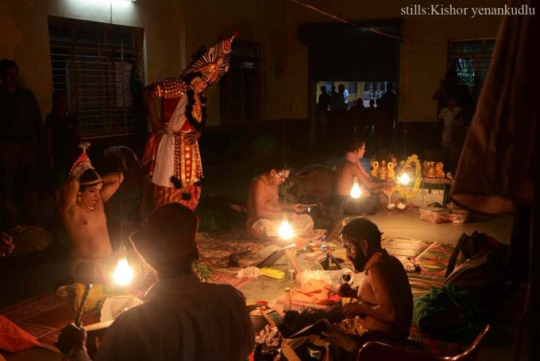
The invocation begins as follows
"Gajamukhadavage Ganapage chelva Trijagavanditanigaaratiyettire"
Translation: O, Lord Ganesha, the beautiful one with elephant’s face For you, worshipped in all the three worlds, we light this sacred flame
After receiving the "prasaada", the 'bhagavata' asks for the deity's/god's permission following which everyone proceeds to the stage. How beautiful! Isn't it? It turns out, that not everyone feels that way!
On the day of the contest, when the performers were doing the chowki puja, one of the organizers barged into the room and disrupted the ritual. It is alleged that the person forcefully blew out the lamp lit for the ritual saying that such pujas cannot be allowed here. Organizers didn't allow media inside, so this was not properly recorded or covered in the media. The performers protested following which police arrived. The performers refused to perform after this, but eventually relented and performed.
Yakshagana Guru, Madhava Nettanige said, "This kind of experience is the first in my 22 years of Yakshagana art life". He also staged a protest asking for an apology from the organizers. He said that even if they forgive the organizers, God will not.
The irony is that this is a festival where there is a contest for "Quran recitation". And no, there is no competition for "Gita recitation" or for that matter, reciting any other holy scripture of Hindus. These are all indicators of things to expect in the coming years! We can soon expect a festival where nonveg halal meals are served (with the exception of pork, for obvious reasons) even if they have to make compromises on the health and safety of children! And don't be surprised if they decide to remove traditional Hindu art forms, while Quran recitation and other Arab cultural contests will continue being normal and perfectly secular.
Hinduism under attack? That's for you to decide!
2 notes
·
View notes
Text
Ishqbaaz Liveblog, E3: A Really Good Premise
I finally understand the appeal of the show. It's the perfect mix of politics, family relationships with a hint of star-crossed-hate-love story. So far. It's like a darker version of Kabhi Khushi Kabhi Gham and I must say, it's really interesting and now I'm even more pissed that they ruined it!
Again - another show that would've done exceedinly well had it ended a year earlier or been turned into seasons. If IPK is India's Pride and Prejudice, then Ishqbaaz could easily be India's Dynasty.
Without further ado, here's the liveblog:
Episode 3 “A Really Good Premise”
- Wah, Shivaay has a habit of walking away!
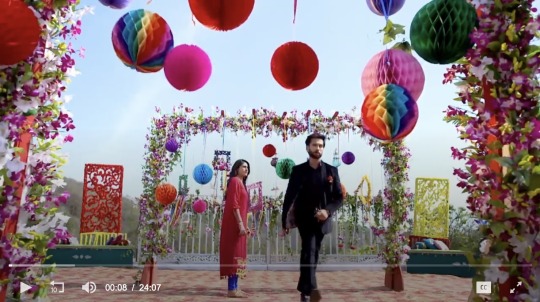
- Rudra, valid question that why Shivaay isn’t throwing Anika out!
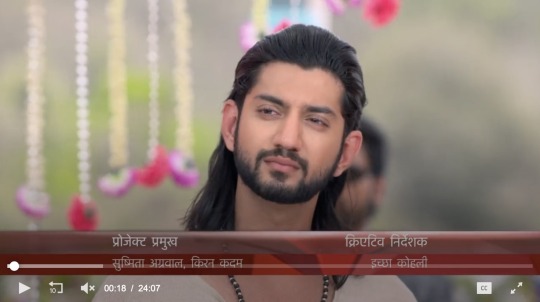
- Om ka look - kuch toh hai.
- Experience? Kamzori?
- Dadi advice time. Lol, the advice went right over Rudra’s head.
- Acha, Shivaay’s kamzori is his khandaan. Nafrat bhi rishta? I feel like Rudy right now! Thank God Dadi explained everything.
- LOL, Anika being disappointed in a big party is ME!
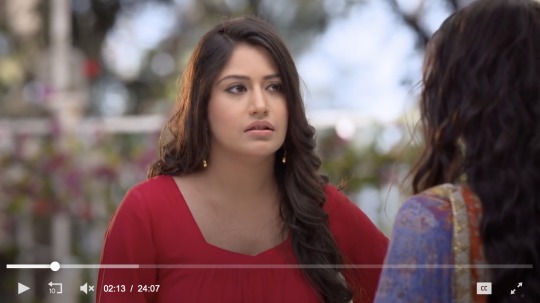
- HAHA LOL Anika!!!!!!!! She knows Shivaay (great) and her look.
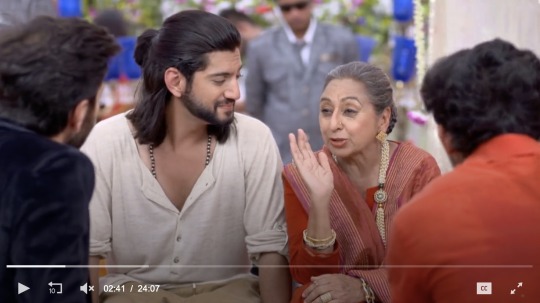
- Hahaha this whole dialogue is like 5 buckets of foreshadowing. There is no shadow left in foreshadow.
- Rudy’s ghatiya shayar is kaabil e taareef.
- Omkara’s belief system is really good - my fav bro right now.
- Ok, each of the bros are some elements.
- Nice chemistry/mining/mineral class?
- Shivaay is iron, Omkara is gold. LOL what is Rudy?
- Dadi hitting Rudy for his immaturity is me - that adorable hitting is everything.
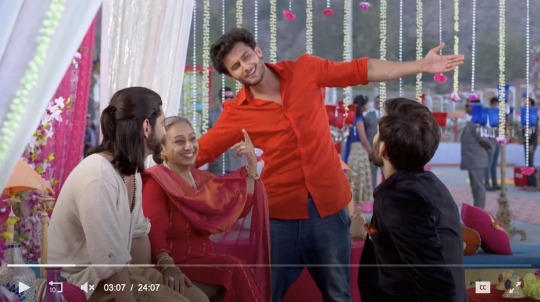
- Ok ab tak they’ve said Ishqbaaz 25 times.
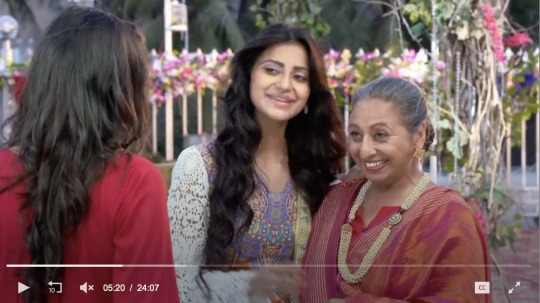
- HAHAHAH DADI already approves Anika! Nice, we stan independent girls. Oh shit, Dadi said about the parents. Poor Anika, she wants a fam :(
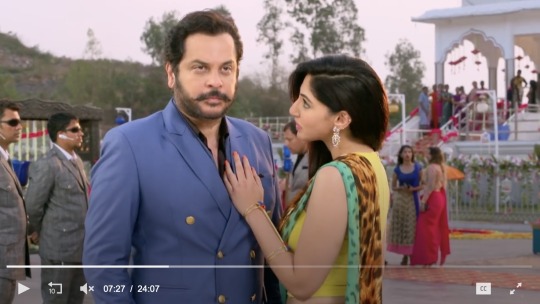
- SVETLANA, TEJ, GET OUT OF MY LINE OF VISION!
- Home Minister - hello bald chacha!
- I must say, Shivaay is highly influenced (in terms of personality) by his Tej uncle. The skin level similarities are interesting to note.
- Rudy and Om already stanning Anika.

- Anika, don’t hold random poori without gloves #covid
- Hahaha, hilarious miscommunication!

- Wah, Rudy is half afraid of Anika’s tashnbaazi. OM IS SO IMPRESSED! I am REALLY liking Anika right now! “Kha kar!” Wah, great use of puns!!!
- This Home Minister might get screwed over like Mool Rajani (I’m just searching for a Mool Rajani right now)
- Tej is dramatic AF.

- Hahahahaha, Home Minister - you’re finding your nobility along with the coins - on the floor.
- TEJ IS SO DRAMATIC. I like him for this! Dude can be an interesting character in the show!
- Mrs. Oberoi????? Ah ofc, the secretary.
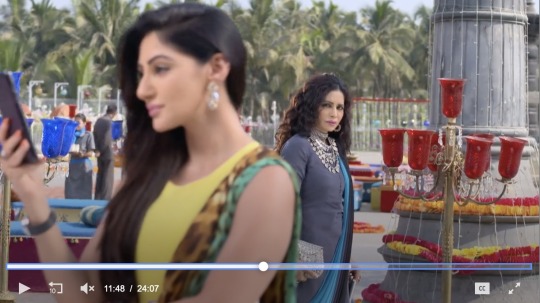

- POOR JHANVI - I’M WITH YOU AUNTY! I’LL POUR TEJ’S BLOOD INTO THE BUCKETS OF PAINT SHIVIKA LATER, MUCH LATER, MAKE OUT IN (that’s the blood of all the shitty people and that’s canon)
- It’s sad but true, in really rich societies people are really ok with infidelities and stuff like that. Ugh, seen these shit first hand.
- JHANVI I’LL KILL TEJ AND SVETLANA FOR YOU.

- TEJ - DIE! HOW COULD YOU DO THIS TO YOUR BEAUTIFUL WIFE!
- Pandit ji, is it possible to burn Tej and Svetlana as offerings? We still do that?
- Lo, phirse Bhaiyon ka advertisement start.

- I must say, what mast paparazzi, I love all their advertisements. From songs to outfits, these kids are like “dude let our parents crap, we’ll coordinate our entry EVERY SINGLE TIME” Squad goals, legit.

- This is Bharat Matrimony.
- Omkara Oberoi, “mere nazar aur nazariya roshni ki tarha hai. Ya toh hai, ya nahi.” Shayar, artist, will give really good hair genes to future children.
- Rudra Oberoi, “ARRE KAB TAK JAWAANI CHUPAAOGI RAANI, MUJHE KO KITNA SATAOGI RAANI (OR NATASHA, OR SHREYA, IDC ABOUT THE NAMES) MUJHSE SH- NOPE - FLIRTING KAROGI….. OH MUJHSE FLIRTING KARO JI!” Abs. The end.
- Shivaay Singh Oberoi “Who the fuck keeps on making my accounts?” *bam goes another phone*
- Or Nirma advertisement?
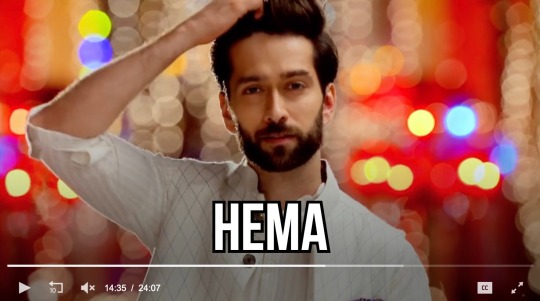
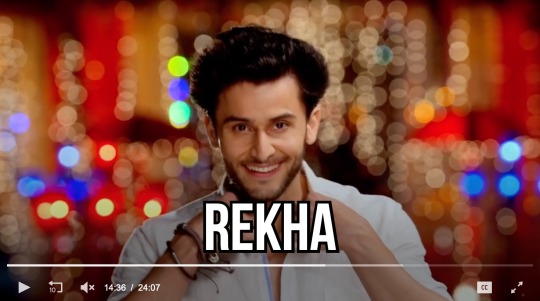
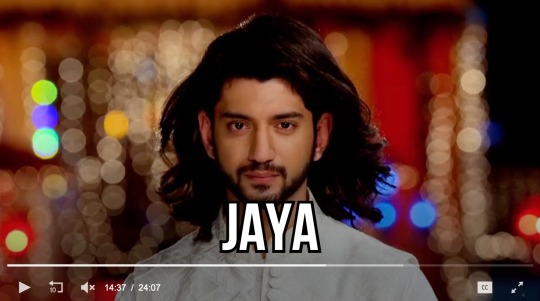

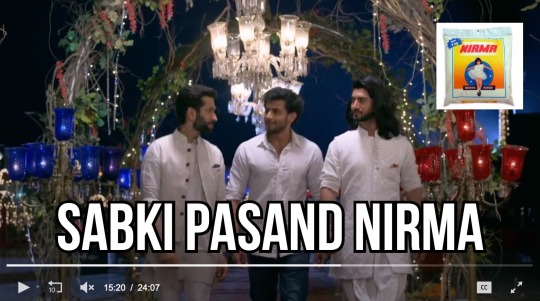
- Dadi is like LOOK AT MY SANSKAR, that totally skipped a generation.
- Ok the press and show remembers that Priyanka is a powerful Oberoi too.
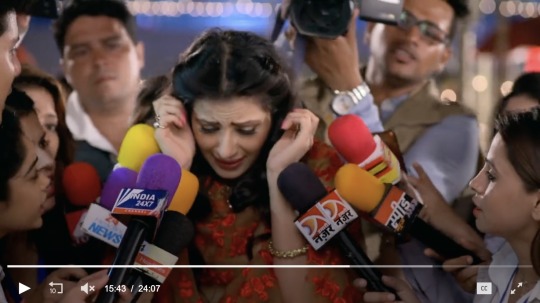
- Dude, leave the girl alone too. Let her breathe.
- YES ANIKA SAVE HER!
- Who are Priyanka’s parents? YES ANIKA, ask important questions. Poor Priyanka. Stuck in this mill of wealthy family politics and shit. Yaar paani pilao koi!
- You know I’m really liking Anika so far!
- OH IT IS THE GANESHA OM MADE! WITH THE RED (good job Om and sorry for the previous question).
- OK I’M WAITING FOR THE K3G SCENE. CHALO BROS EK SAATH AARTI KARO. GIVE COMPETITION TO HUM SAATH SAATH HAI!
- DO IT, GIVE EVERYONE THE HEART ATTACK.
- Pinky… you got married to the wrong brother. Tej and Pinky should’ve married - it would’ve been hilarious AF.
- Aye Haye, Shivaay didn’t forget his smallest bro either.
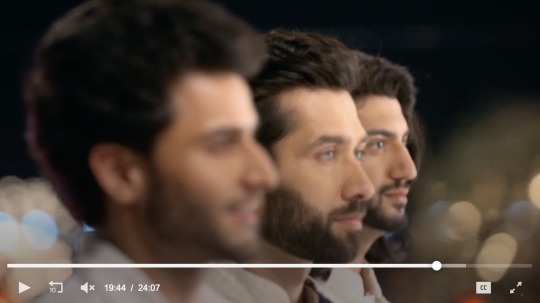
- Ok today’s poster is Om Jai Jagdish!
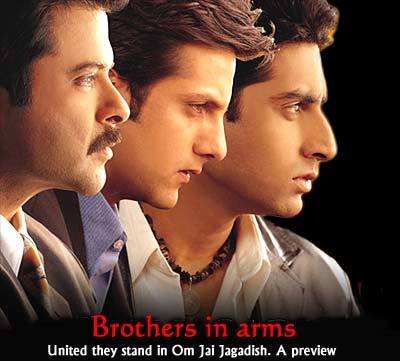
- #Feelingdharmic.
- Shivaay’s redeeming quality is the fact that he’s a really good brother.

- YAY K3G scene strikes!
- I’m loving the aesthetic of the show as of yet - I still have questions as to what happens later. Very cohesive writing too. Usually first twenty five episodes are (cause that holds the pitch of the show and stuff)
- Meanwhile… Tej has grinned his molars to nothing, Pinky has done 50000 eye rolls, Svetlana doing random khusur pusur and Dadi just crying tears of happiness (I’m Dadi)
- OH NO, self burning live candle dude is coming on fore.
- Dude, kisko jalana tha

- aur kaun jal raha hai.

- Yeah dude, Ganesh ji punishes paapis instantly.
- Wait are the three bros lost in puja that they don’t see—

- WTF, damn that’s scary.
- The End -
Well well well, I’m excited to liveblog the next episode! See you tomorrow (good thing this was queued). Also, what wouldn’t I have given to see IPK in this quality camera and INITIAL aesthetics (focus on initial, I have no idea what shit happens later in this show). This HD quality main Rabba Ve = Jalebi nosebleeds.
- S
Next up: E4 “Anyone between 40-59 is shit”
#ib#ishqbaaz#ishqbaaz liveblog#tere liye ttji#tellywoodtrash#jalebi watches something else#it's nice#oh arnav in those suits#RABBA VE#KHUSHI IN THIS CAMERA#HOOO RABBA VE#Queued post
20 notes
·
View notes
Text
How to do Lakshmi Pooja at home on this Diwali?

Diwali is an auspicious Indian festival and it is a festival of lights. Before this festival people cleans their houses and decorate their houses with colorful lights, diyas, candles, torans, Diwali lamps and lanterns, torans, and other Diwali items. Also, people celebrate occasions by sending diwali gifts online to those who are not able to visit and those you can visit go to their dear ones’ houses and offer diwali gifts, dry fruits, hampers, and sweets. In the evening, all Indians perform Lakshmi Puja at their houses and workplace. All believe that Goddess Lakshmi is the goddess of wealth, happiness, and prosperity. This lakshmi puja is performed to welcome goddess lakshmi at their house. People pray to goddess Lakshmi and wish for peace, wealth, and prosperity in their family members’ lives. If you want to do Lakshmi Puja/ Diwali at your house and you don’t know the steps on how to do Puja then read this blog, here we will describe step by step how to do Lakshmi Puja at home this Diwali.
This Year Muhurat of Diwali 2021: Time for Lakshmi Pooja and Lord Ganesha Puja
Time: 06:09 pm to 08:20 pm
Date: 4th November 2021
Duration: 1 hour 55 minutes
Pradosh Kaal: 17:34:09 PM to 20:10:27 PM
Vrshabh kaal: 18:10:29 PM to 20:06:20 PM
Lakshmi Puja Vidhi: Step-by-Step guide:
Step 1: Purify your home
The first step of Lakshmi pooja is the Diwali cleaning and it is a very important step. You need to clean every corner of your house. After cleaning, sprinkle Gangajal (holy water from river Ganga) to purify the surroundings.
Step 2: Set up puja platform
In your puja room/living room where you are going to perform lakshmi pooja, there you need to spread a red cotton cloth on a table/stool and keep a handful of grains and Diwali sweets in the center.
Step 3: Place a Kalash
Take the kalash can be of silver/bronze pot. You need to place the kalash in the middle of the grains. And then Fill the kalash with 75% of water and put one supari (betel nut), one marigold flower, a coin, and some rice grains. Place 5 mango leaves on the kalash in a circular design.
Step 4: Place idol of Lakshmi and Ganesha for puja
Now in the puja area, you need to place the idol murti of Goddess Lakshmi in the center and the murti of Lord Ganesha on the right side (South-West direction) of the kalash. Take a small Diwali pooja thali and make a small flat mountain of rice grains, draw a lotus flower with Haldi, put some coins and place it in front of the idol.
Step 5: Place accounts books/wealth related items
Now place your business/accountancy book and other wealth/business-related items in front of the idol.
Step 6: Apply tilak and light diya
Now apply tilak to Goddess Lakshmi and Lord Ganesh and light Diwali diyas. Apply tilak to kalash also.
Step 7: Offer flowers
Now offer flowers to Lord Ganesh and Lakshmi. Keep some flowers in your palm for prayer.
Step 8: Recite Puja Mantra
Place flowers in your palm and join your hands in prayer mode, close your eyes and recite the Diwali puja mantra. After prayer, offer the flower kept in your palm to Ganesha and Lakshmi and offer diwali gifts for family.
Step 9: Offer water
Take a Lakshmi idol murti and bathe it with water followed by panchamrita. Bathe it again with water, wipe with a clean cloth and place it back on the Kalash.
Read more - https://www.indiagift.in/blog/how-to-do-lakshmi-pooja-at-home-on-this-diwali/4503
2 notes
·
View notes